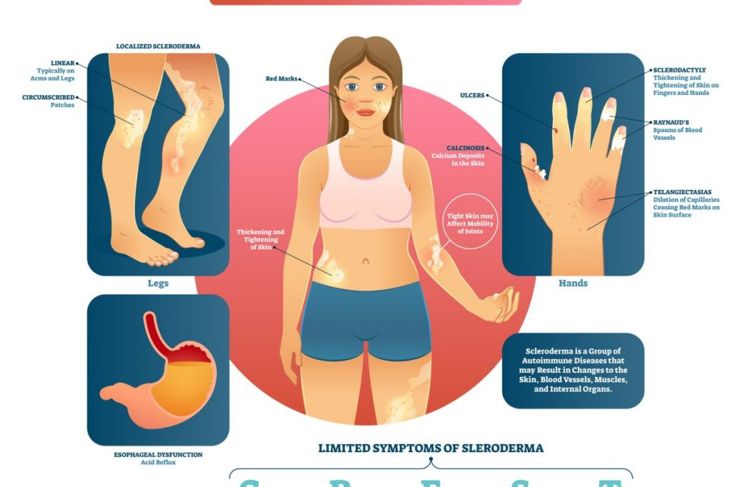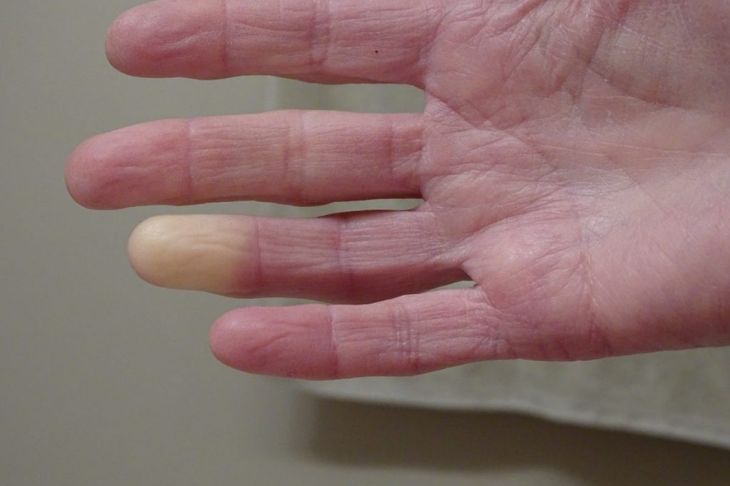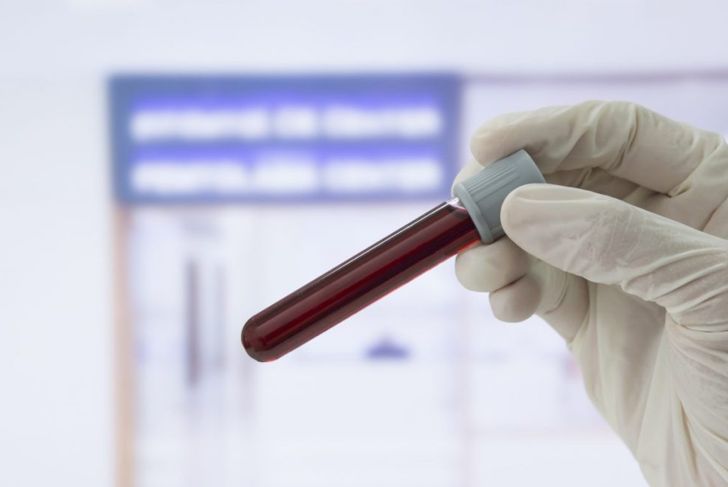Mixed connective tissue disease (MCTD) is an autoimmune disorder that can affect both men and women at any age but most commonly affects women under 50. It is a difficult disease to diagnose because it shares so many symptoms with other autoimmune diseases. The symptoms also vary from person to person. Treatment and outlook for mixed connective tissue disease depend on the signs and symptoms of each patient.
Overlap Disease
Autoimmune disorders develop when the immune system mistakes healthy tissues in the body for foreign invaders and begins attacking them. Mixed connective tissue disease is an overlap disease, which means it presents the same symptoms as many disorders, hence the difficulty in reaching an accurate diagnosis. MCTD can present with the same signs and symptoms as lupus, scleroderma, and polymyositis.
Lupus
One of the diseases with which mixed connective tissue disease has overlapping symptoms is lupus, another autoimmune disease. Lupus causes the body to attack organs and tissues, including the skin, joints, kidneys, heart, and lungs, leading to chronic inflammation. Symptoms vary greatly from one case to the next, but the most common are fever, fatigue, joint pain, headaches, and skin lesions.
Scleroderma
Mixed connective tissue disease also has overlapping symptoms with scleroderma, a rare group of conditions that cause tightening and hardening of the connective tissues and skin. Signs and symptoms vary depending on the type of scleroderma and can include patches of hard, tight skin, Raynaud’s disease, and digestive symptoms like difficulty swallowing, heartburn, cramps, and bloating.
Polymyositis
Polymyositis — as well as mixed connective tissue disease — causes muscle weakness on both sides of the body, making it difficult to perform simple actions like standing up from a chair, reaching overhead, and climbing stairs. These symptoms develop gradually over weeks or months.
Classic Symptoms
In the beginning, mixed connective tissue disease presents with symptoms similar to the other diseases mentioned. These include muscle pain with no apparent cause, fatigue, low-grade fever, and joint pain. As it progresses, however, doctors trying to diagnose the condition watch for other classic symptoms, such as Raynaud’s phenomenon, inflamed joints and muscles, and pulmonary hypertension. Another classic symptom of mixed connective tissue disease is swollen fingers, which can progress to sclerodactyly, where the tissue hardens and limits movement.
Other Symptoms
Other important and often serious symptoms develop over time. Rashes may develop on the face and knuckles. The eyelids may take on a purplish hue. About ten percent of people with mixed connective tissue disease experience neurologic abnormalities, including seizures, headaches, and sensory disturbances. Some of the most severe symptoms of mixed connective tissue disease are abnormalities in lung function and, rarely, cardiac-related issues that may result in pericarditis, myocarditis, or aortic insufficiency.
Complications
Mixed connective tissue disease can lead to serious complications that affect multiple areas of the body. Pulmonary hypertension is the most serious complication and the main cause of death in people with mixed connective tissue disease. The second leading cause of death in this patient population is heart disease. MCTD can also damage the kidneys and gastrointestinal tract, and some individuals develop anemia and hearing loss.
Diagnosis
Diagnosis of mixed connective tissue disease is difficult. The symptoms of lupus, scleroderma, and polymyositis appear one after the other over a period of years. Some features of MCTD may make diagnosis easier, however. It does not cause the same kidney and central nervous system damage as lupus. Raynaud phenomenon, as well as severe arthritis and pulmonary hypertension, are much more common in mixed connective tissue disease that the other autoimmune diseases. Blood tests will also show elevated levels of the antibody anti-U1-RNP.
Treatment for Mixed Connective Tissue Disease
There is no cure for mixed connective tissue disease, so treatment aims to address the unique symptoms affecting each patient. Some people require treatment only during flare-ups, while others may need it all the time. Antihypertensive medication will treat pulmonary hypertension. Some inflammation can be treated with over-the-counter nonsteroidal anti-inflammatories, but some people may require high doses of corticosteroids. If major organ systems are affected, the doctor may prescribe immunosuppressants. Regular electrocardiograms can monitor heart health as symptoms progress.
Prognosis
Most people with mixed connective tissue disease have a good long-term outlook but it really depends on the severity of the disease and the signs and symptoms of each individual. The ten-year survival rate for MCTD is about 80 percent. Some people go for years without needing any treatment while others develop fatal complications in as little as six years.

 Home
Home Health
Health Diet & Nutrition
Diet & Nutrition Living Well
Living Well More
More




















